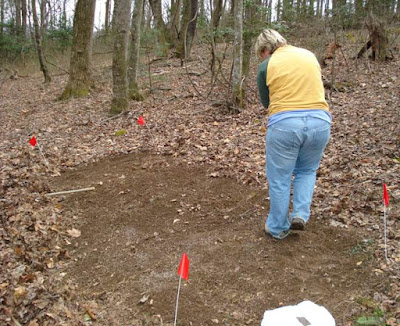"From my own experience and that of other growers, I am convinced that at least one, but no more than two, mature plants per square foot is best. Anything denser courts disaster by facilitating the spread of disease. Anything thinner does not optimize the financial potential of the operation, though I'd certainly recommend erring on the side of caution."
To get this density, you need to plant four to eight seeds per square foot. Why so many? Because even with the best of seeds, you can expect to lose a large percentage of your seeds to birds, insects, rodents, poor soil contact, drying out, being washed away, etc. During the first few years of growth you will lose even more to the same causes and to winter kill, being crushed underfoot, being covered too deeply with leaves and branches, and to other causes I can't even think of right now. By the time the plants are three to four years old, you should have just about the right density.
Scott estimates that there are 6,400 to 8,000 seeds per pound, or between 400 and 500 in an ounce. So, according to Scott's calculations "if you sow one ounce of seed on 100 square feet of land or, as I prefer, two ounces (between 800 and 1,000 seeds) on 200 square feet, you can achieve an average planting density of between four and five seeds per square feet, or about 25 pounds of seed to the acre."
Scott is a very practical and well-organized person. He plans his seeding trips out carefully so he can be quick and efficient when he reaches his planting site.
"Just before going into the woods to plant, weigh out your seeds into multiple plastic bags and place them in a small cooler, or at least a covered bucket." If you prepared 200 square foot sections, weigh out 2 ounces per bag. Using one bag per section, you will have a final sowing rate of one ounce of seed per 100 square feet. Scatter the seeds to the left and right of you as you walk slowly over your section. After the first few times, you will get a good feel for how to get the seed spread evenly over the section.
In another post, we will talk about gypsum (or you can read about it for yourself on pages 64-65 in the book), but for now let's assume that you have decided to apply 10 lbs of gypsum on your 200 square foot section of planting area. Scatter it evenly over the planted area. I just put the weighed out gypsum in a small bucket and scatter it by hand. Some people use a small hand cranked fertilizer spreader.
Then, and this is the slick part of this method, "stand on the strip that you've just sown, reach straight uphill with your rake, and, again using the five-foot mark on the rake handle as a guide, rake down the next five feet of leaf litter directly onto the stip you've just seeded." In this way you are mulching (covering up) the area you just planted while at the same time, uncovering the next area to be planted. Sow seed and gypsum on that new section, and then pull down another five foot swath of leaves to mulch that area and expose a new planting area. "Note that you have not moved any leaves more than once, and with the exceptions of the bottom and top sections, every rake stroke has accomplished two tasks." On steep slopes, you might want to lay limbs and small branches on top of the leaves to hold the mulch in place.
If you are serious about growing woodland medicinal herbs, whether for a
business or your own personal enjoyment, this is the book to have.
Written by two well-know authorities, the book is chock full of
information and hundreds of pictures on how to grow ginseng, goldenseal,
ramps, black cohosh, and many other native herbs.
How to Get a Copy of the Book: We suggest you order the book through the publisher, New Society Publishers,
or your favorite local book store; that way the authors can receive
their full royalties. It is available in bookstores where native plant
gardening is popular. You can order the book through all the big on-line
discount book sellers. Many
sellers offer the book on Ebay.
The book is also available as an ebook through Amazon, Barnes and Noble,
New Society Publishers, and elsewhere.
The book is a high-quality soft cover book with 508 pages. It has a
center color photo section and black and white photos throughout. Here
is detailed information about the book and a link to the table of contents.




No comments:
Post a Comment